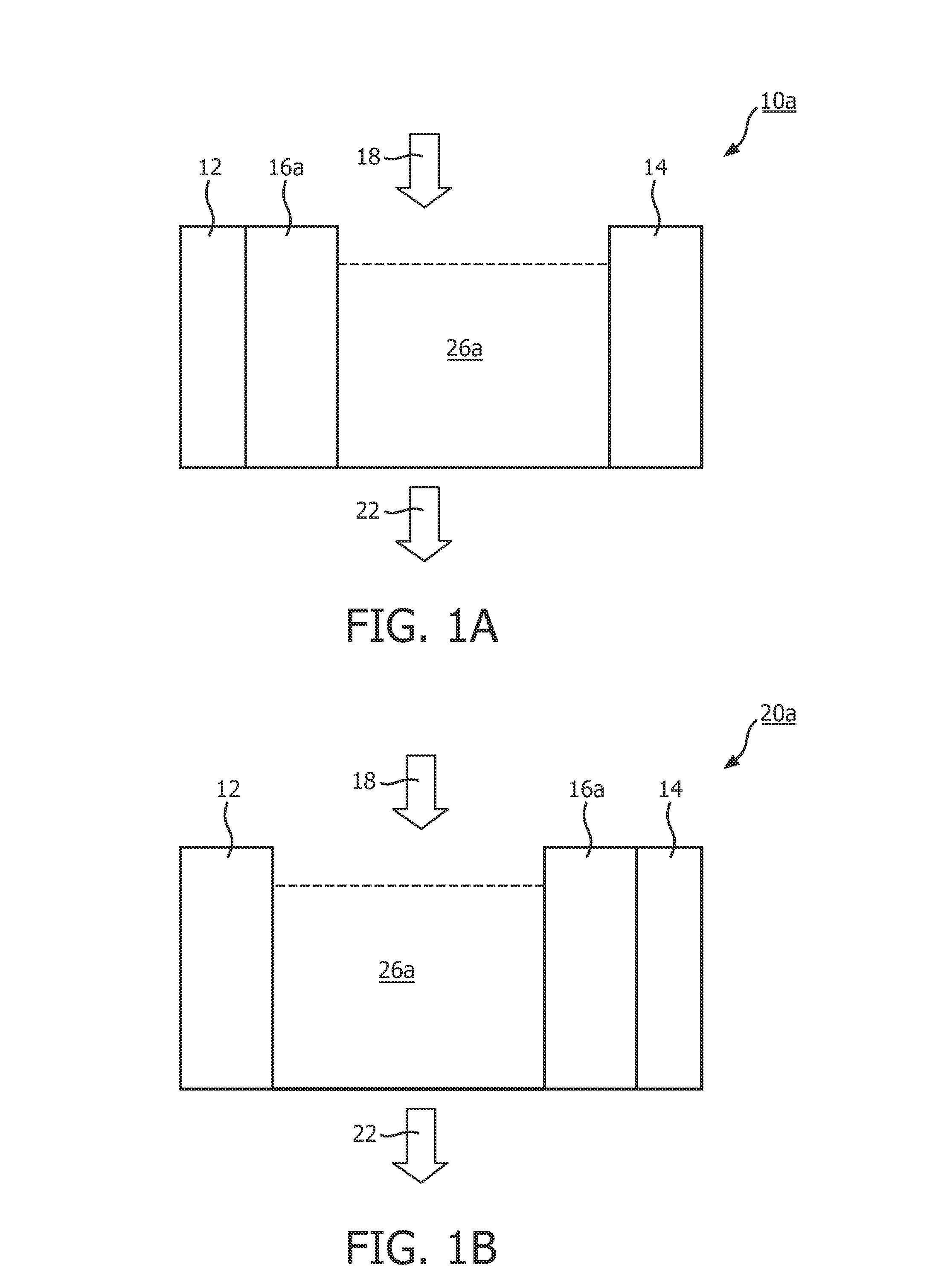Ion absorption/desorption device and a method thereof as well as a ph adjustor
- Summary
- Abstract
- Description
- Claims
- Application Information
AI Technical Summary
Benefits of technology
Problems solved by technology
Method used
Image
Examples
embodiment 1
[0038]The first electrode 12 of the electrode pair 12, 14 in FIG. 1A serves as a cathode, the second electrode 14 serves as an anode, the liquid 26a used therein can be e.g. water containing Ca2+. The surface of the first electrode 12 is covered by agarose gel. The chemical formula of the agarose gel is:
[0039]Namely, hydroxyl groups are contained in the chemical formula of the agarose gel. In the case of applying a voltage on the first electrode 12 and the second electrode 14, the Ca2+ in the water moves towards the first electrode 12 which serves as the cathode during the absorption, and gets into the gel. Since the hydroxyl groups in the agarose gel chelated the Ca2+, the Ca2+ is immobilized in the gel. Meanwhile, the water is deoxidized at the cathode surface, i.e., the following reaction occurs: 2H2O+2e=H2+2OH−, thereby, H2 and OH− are generated on the cathode surface. Part of the Ca2+ that get into the agarose gel chelated with the hydroxyl groups, while the other part of the C...
embodiment 2
[0043]In this schematic embodiment, the fabricating process of agarose gel will be introduced schematically.
[0044]Generally, at the temperature of 90° C., agarose of 2 g can be dissolved in deionized water of 100 ml. When the agarose is completely dissolved, the agarose solution is poured into an electrode module containing electrodes, e.g. the electrode module containing the first electrode 12 and / or the electrode module containing the second electrode 14. Preferably, conductive material 24, such as carbon cloth, is applied between the electrode module and the agarose solution. The purpose of applying the carbon cloth lies in enhancing the bonding force between the agarose gel formed by the agarose solution and the electrode due to the concavo-convex shape of the surface of the carbon cloth. After cooling at room temperature for two hours, the agarose gel is formed on the surface of the first electrode 12 or the surface of the second electrode 14 or the surfaces of both. Subsequent...
embodiment 3
[0046]In order to explain the absorption speed and absorption efficiency of the present invention, the agarose gel fabricated in embodiment 2 will be used to cover the surfaces of the first electrode 12 and the second electrode 14 to perform the following experiment. The liquid 26a used in embodiment 3 is water containing Ca2+, CO32−, K+ and Cl− ions. The liquid 26a is input from the input 18 to a reaction chamber constituted by the first electrode 12 and the second electrode 14, and the agarose gel covering the first electrode 12 and the second electrode 14. DC voltage of 30V is applied on the first electrode 12 and the second electrode 14, standard titration is used to detect the content of ions in the liquid 26a. The detected data is shown in Table 1 below.
TABLE 1Absorption of different cations and anions under a voltage of 30 V.Time0 min5 min10 min20 min30 min40 min60 minCa2+4.83.83.22.31.81.10.54(mM)CO32−5.04.63.63.43.02.51.2(mM)80 minK+ (mM)53.752.670.890.710.530.36Cl− (mM)53....
PUM
| Property | Measurement | Unit |
|---|---|---|
| Electrical conductor | aaaaa | aaaaa |
| Electric potential / voltage | aaaaa | aaaaa |
| Efficiency | aaaaa | aaaaa |
Abstract
Description
Claims
Application Information
 Login to View More
Login to View More - R&D
- Intellectual Property
- Life Sciences
- Materials
- Tech Scout
- Unparalleled Data Quality
- Higher Quality Content
- 60% Fewer Hallucinations
Browse by: Latest US Patents, China's latest patents, Technical Efficacy Thesaurus, Application Domain, Technology Topic, Popular Technical Reports.
© 2025 PatSnap. All rights reserved.Legal|Privacy policy|Modern Slavery Act Transparency Statement|Sitemap|About US| Contact US: help@patsnap.com



